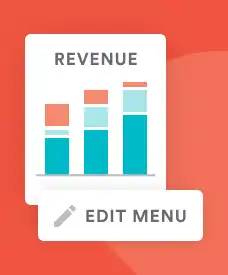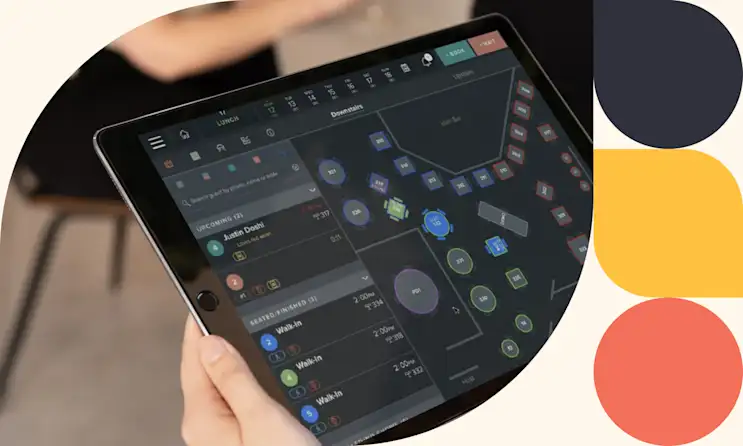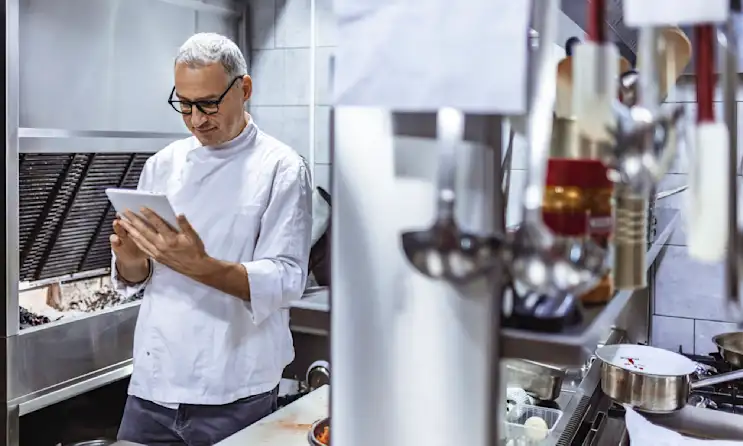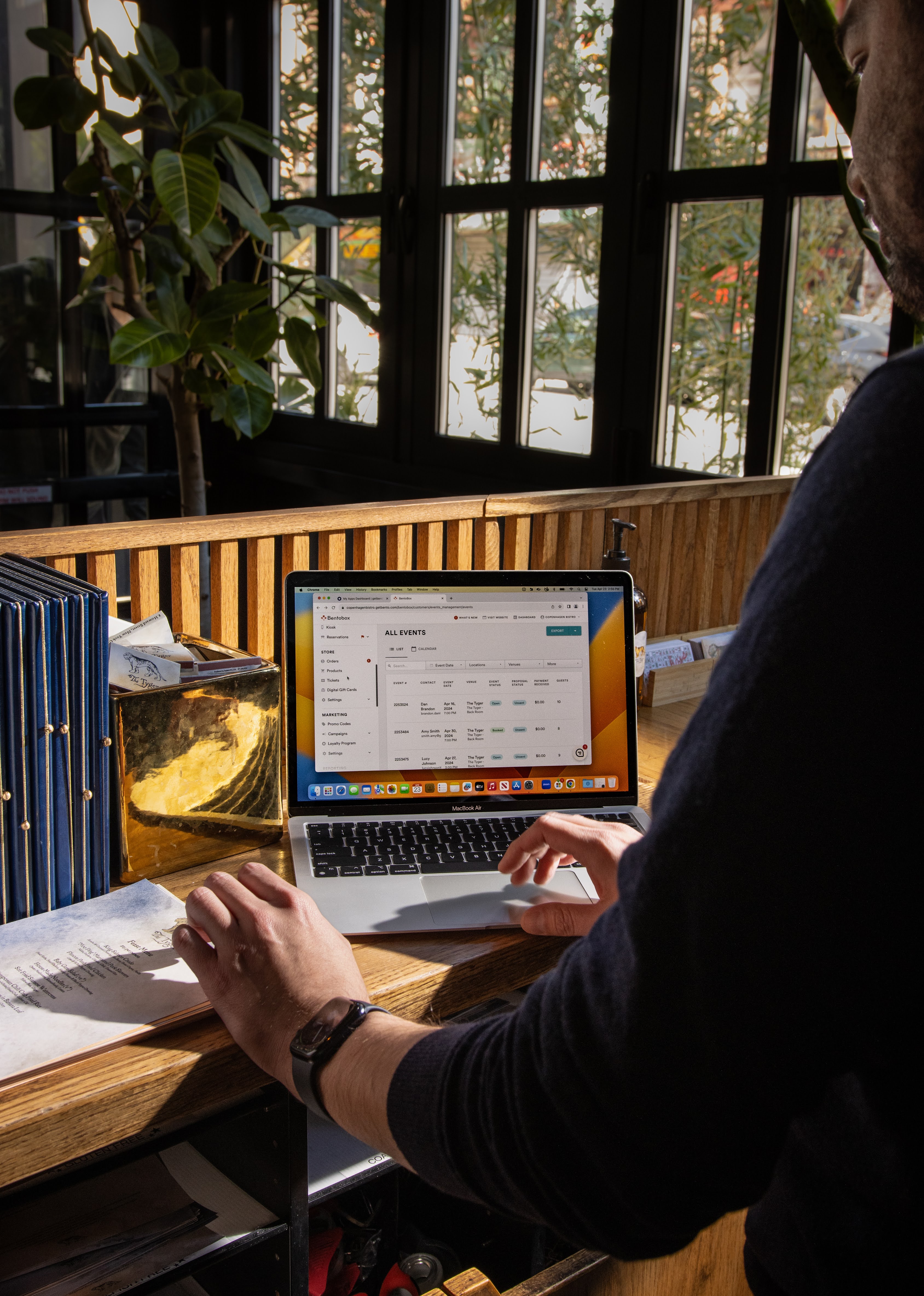Operations
8 Key Restaurant Benchmarks To Know
To measure success, your restaurant needs clearly defined goals. Use these key metrics to guide the way.
Restaurant metrics such as profit margin, food cost percentage, and table turn time are more than just arbitrary numbers. They’re a compass that shows whether you’re headed in the right direction financially. These numbers help you understand where you’re excelling, where you're struggling, and where you need to focus attention to make your business thrive.
The most important restaurant metric is arguably profit margin. But after calculating its profit margin, how exactly does a restaurant know if the number is good, bad or average? That question is answered below, alongside benchmarks for seven other key restaurant metrics.

What's Your Restaurant ROI?
Bring in more money and return your investment with restaurant technology that makes real money for your business.
1. Profit Margin
Average Restaurant Profit Margin: 5%
Profit margin is a restaurant's North Star metric. The number calculates what percent of a restaurant’s revenue was not used to cover its expenses. In other words, it shows how effective a restaurant is at paying its bills and still having money in the bank for savings and future growth.
The number is calculated by subtracting expenses from revenue, then dividing that difference by total revenue.
Restaurant Profit Margin = ((Revenue – Expenses) ÷ Revenue) x 100
For example, if a restaurant grossed $1,000,000 in a year but had $945,000 worth of expenses, that restaurant’s profit margin would be 5.5%.
Restaurant Profit Margin = (($1,000,000 – $945,000) ÷ $1,000,000) x 100
Restaurant Profit Margin = ($55,000 ÷ $1,000,000) x 100 = 5.5%
The National Restaurant Association claims a roughly 5% profit margin is the industry norm. However, like all metrics on this list, a restaurant’s profit margin will vary based on a multitude of factors, such as location, concept, and age.
For instance, newer restaurants might need to spend more on marketing and renovations in their first year, while older restaurants can rely more on word-of-mouth and the steady business of regulars. Fine-dining establishments can also see higher margins than more casual eateries, as clientele are less price-sensitive on a more elegant meal.
That said, one of the best ways to increase profit is by monitoring the other metrics that directly impact profitability. Here are several to keep a close eye on.
2. Break Even Point
Average Restaurant Break Even Point: 2-3 years
Break even refers to the point in either dollars or time when a restaurant becomes profitable. Once a restaurant passes its break even point, it can start saving money or investing in areas it previously couldn't afford.
Restaurants usually cost hundreds of thousands of dollars to open, and during those initial years, the restaurant pays down the loans required to start the business along with day-to-day expenses like wages and inventory. That’s why it’s important to set a realistic but speedy timeline for breaking even.
Break even is calculated by dividing the restaurant’s fixed costs by the difference between average selling price and average variable cost. As an equation, it looks like this:
Break Even Point = Fixed Cost ÷ (Average Selling Price – Average Variable Cost)
As an example, a restaurant business has a fixed startup cost of $500,000, expects an average sale of $25 per customer, and expects variable costs per sale to be $17. Using the above equation, the restaurant would break even after serving 62,500 customers.
Break Even Point = $500,000 ÷ ($25 – $17) = 62,500
To get break even in sales, multiply the units by the average selling price. In this instance, it’s 62,500 units x $25, or $1,562,500.
To get break even in time, conduct sales forecasts to determine how much sales are expected per year. If this business projected $800,000 per year, it would reach profitability in just under two years.
According to Binwise, it takes the average restaurant 2-3 years to break even, but major expenses such as building, renovation, and even franchise licensing costs will impact this timeline. Reducing these opening costs, building a profitable menu and ensuring strict inventory management help restaurants break even faster.
3. Inventory Variance
Average Inventory Variance: 20%
Inventory variance measures the difference between how much inventory has been recorded as used and how much was actually depleted.
Ideally, this number would be zero — every ounce of food that comes into the kitchen would either end up on a plate in its intended quantity or be recorded as waste. However, this is unrealistic in the hustle and bustle of restaurant kitchens, with Binwise and William Vaughan Company reporting a 20% inventory variance as the norm. Since food costs are one of a restaurant’s biggest expenses (more on that in the next section), a variance this large can seriously harm the business.
To determine variance, the first thing to do is subtract the difference between recorded inventory depletion and actual depletion in that time period. That number is then divided by actual depletion, then multiplied by 100.
Inventory Variance = ((Recorded Depletion – Actual Depletion) ÷ Actual Depletion) x 100
As an example, a bar’s sales reports indicate it sold $100,000 for the month, but the manager realizes that $120,000 worth of alcohol has been depleted in that time. That means this bar’s variance is 16.7%.
Inventory Variance = (($100,000 – $120,000) ÷ $120,000) x 100
Inventory Variance = ((–$20,000) ÷ $120,000) x 100 = -16.7% = 16.7%
Note: If your equation yields a negative percentage, as in the example above, your inventory variance should still be expressed as a positive.
The best way to lower this variance is by setting and enforcing inventory policies in the kitchen, such as:
Setting standard portion sizes for each dish and providing quick, easy ways to measure.
Creating a process for reporting inventory spills and waste.
Returning unusable inventory to suppliers.
Cracking down on restaurant theft by kitchen staff.
Read more: How to Reduce Food Waste in Restaurants
4. Table Turnover Time
Average Table Turnover Time: 90 Minutes
Table turn time measures the time between when one party sits at a table and another party sits at the same table. This number is determined by staff efficiency, but also by factors outside of employee control such as time of day, party size, and restaurant concept.
For example, a two-top at a diner will turn much faster during breakfast than a party of ten having dinner at a four-star steakhouse. However, as a rule of thumb, GloriaFood estimates that tables turn every hour and a half.
Table turnover rate is measured by dividing the number of parties served during a shift by the number of tables in the restaurant, then dividing that number by the number of hours in the shift.
Average Table Turnover Time = (# of Parties Served) ÷ (# of Tables) ÷ (# of Hours)
If a restaurant serves 100 parties in one night, has 20 tables and has a dinner shift lasting five hours, that means its turnover time is one hour.
Average Table Turnover Time = (100 Parties) ÷ (20 Tables) ÷ (5 Hours) = 1 Hour
Table turnover rate can be expedited by having clear standard operating procedures that emphasize speed, like ensuring servers take drink orders within three minutes of guests sitting down. Implementing a reservations system or digital waitlist can also help turn tables faster. After all, the faster tables turn, the more customers the restaurant can serve in a single service.
Read more: Which Restaurant Reservation System Should You Use?

Takeout & Delivery Commission Calculator
Want to increase your profits?
Calculate your monthly savings if you use direct online ordering vs. third-party marketplaces.
5. Food Cost Percentage
Average Food Cost Percentage: 30%
Naturally, food is one of a restaurant’s biggest expenses — if not its biggest. A restaurant’s food costs should be roughly 30% of its total revenue, but there is variation depending on the concept. While The Houston Chronicle puts the industry average between 28% and 35%, RestaurantOwner.com narrows that number down to 28-32%.
Food cost percentage is a relatively straightforward metric to calculate. It’s determined by dividing the cost of ingredients depleted in a given time period by the revenue in that same time period, then multiplying that number by 100. Assuming a restaurant’s food costs were $320,000 for the year and its revenue was $1,000,000, its food cost percentage would be 32%.
Food Cost Percentage = (Total Food Cost ÷ Total Revenue) x 100
Food Cost Percentage = ($320,000 ÷ $1,000,000) x 100 = 32%
Controlling food cost is a sure-fire way to boost a restaurant’s profit margin. Some ways to curb this cost are to monitor inventory variance, re-engineer the menu, and reconfigure how inventory orders are placed.
Ideally, orders should be large enough to maximize suppliers’ volume discounts but small enough that sitting inventory doesn’t expire. However, it’s important to remember food costs shouldn’t be too much lower than 25%. If numbers get that low, it could mean menu costs are too high, which might drive customers away to find better value from a competitor.
6. Labor Cost Percentage
Average Labor Cost Percentage: 25-35%
Like food cost percentage, a restaurant’s labor cost percentage is its total labor-related costs divided by its total sales. That number is then multiplied by 100.
If, for example, a restaurant spends $330,000 on labor for the year, and its revenue is $1,000,000, its labor cost percentage would be 33%.
Labor Cost Percentage = (Total Labor Expenses ÷ Total Revenue) x 100
Labor Cost Percentage = ($330,000 ÷ $1,000,000) x 100 = 33%
According to Restaurant365, labor cost percentage varies between 25% and 35%, with casual and quick-serve restaurants typically on the lower side and full-service restaurants on the higher side.
Labor cost percentage factors in employee wages, as well as overtime costs, benefits, payroll taxes, and any other expenses pertaining to staff. Also like food costs, this number should not become too low. If it does, it suggests the restaurant is understaffed or underpaying its employees — both of which can contribute to a higher employee turnover rate.
That said, there are some quick wins to help a restaurant control its labor costs. These include:
Scheduling based on sales forecasts to ensure the restaurant is properly staffed.
Monitoring overtime instances to cut back on time-and-a-half wages.
Adhering to any applicable predictive scheduling laws to reduce the risk of Fair Workweek-related lawsuits or predictability pay.
Read more: How to Hire Restaurant Staff & Utilize Staff With Limited Resources
7. Prime Cost
Average Restaurant Prime Cost: 60% of Sales
In a restaurant, prime cost is simply its food cost plus its labor cost. Collectively, these two line items make up the bulk of a restaurant’s expenses. As the industry averages for both of these expenses each make up about 30% of a restaurant’s revenue, combined they account for approximately 60% of sales.
Restaurant Prime Cost = Food Cost Percentage + Labor Cost Percentage
Using the examples in the sections above, this restaurant had a 32% food cost and a 33% labor cost. Combined, they total 65% of sales.
Restaurant Prime Cost = 32% + 33% = 65%
Although it seems redundant, prime cost is important because it offers a big-picture view of where a restaurant’s money is going.
If labor and food costs are each 1.5% above their target, it might not seem like a big deal. Together, however, they represent a 3% variance in a restaurant’s goal for expenses. In an industry where profits hover around 5%, that variance can reduce restaurant profits by 60%. Acting on the above best practices to keep these two expenses low can help a restaurant hit its financial goals and achieve higher profit margins.
8. Employee Turnover Rate
Another metric entirely contingent on the business, employee turnover rate measures how well restaurants retain hired employees. The number is calculated by dividing the number of employees who left in a year by the average number of employees at the beginning and end of the year, then multiplying by 100.
Employee Turnover Rate = (Avg. # of Employees) ÷ (Employees Who Left) x 100
For example, if a restaurant started the year with ten employees, ended with twelve and saw four leave in that time, its turnover rate would be 36.36%.
Employee Turnover Rate = 11 ÷ 4 x 100 = 36.36%
Given how restaurants have struggled to hire and keep talent, it’s clear the industry’s turnover rate is inconsistent. However, restaurants can break this cycle by implementing better pay and benefits, allowing more flexible scheduling, and outlining clear paths for advancement. Employees want to feel valued — and they now realize there are plenty of businesses that will make them feel that way.
Still, it’s best to remember this number will never be 0%. The restaurant industry is full of inevitable turnover that comes with seasonal needs and younger workers. Plus, a 0% turnover means the restaurant might not be holding staff to high enough standards and allowing poor performers to carry on without consequence.
For staffing support, check out these resources:
Keeping Restaurants Profitable
These are just a handful of restaurant metrics and expenses to diligently track. While the process of monitoring these numbers seems tedious, staying ahead of them ensures a business can spot where it’s losing revenue or slipping in performance and quickly change course.
Industry benchmarks may be imperfect, but they provide a useful starting point for restaurants to compare performance against and flag potential issue areas. Once you have more visibility into your baseline numbers, you can turn your attention to building an action plan for improvement. For example, your analysis might reveal that you’re paying high fees on third-party ordering marketplaces. A next step could be to explore commission-free tools for your Takeout & Delivery or Online Catering to improve your profit margin. Understanding your metrics and starting points is key to knowing what parts of your business to invest in for the best ROI.
Ready to bring in more money? Sign up for your own personalized demo.

BentoBox Marketing & Commerce Platform
Deliver Smarter Hospitality
Want to stand out online, bring in more money, engage your diners, and streamline operations?
Recommended

Operations
The Ultimate Guide to Restaurant Inventory Management
January 13, 2022
Learn the terms, steps and metrics that aid in the process of this key business process.

Operations
10 Types of Restaurant Technology You Need in 2024
March 29, 2023
Your guide to picking the right tools that will support your restaurant's growth.

Operations
How to Streamline Your Restaurant Menu (and Make It More Profitable)
September 14, 2021
With margins tighter than ever, restaurants nationwide are shrinking their menus. Here's what you need to know.

